Department of Engineering Profiles
Harvey Mudd’s top-ranked Department of Engineering is made up of talented individuals who provide diverse perspectives that enhance the College’s general engineering program. Here are a few of their stories.
Prof. TJ Tsai: At the Intersection of Music, Signal Processing and Machine Learning
This professor uses music as a vehicle to guide and mentor students toward mastery in signal processing and machine learning.
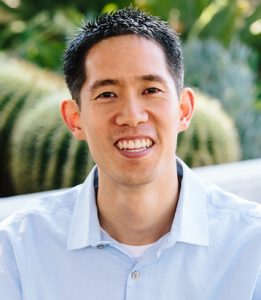
TJ Tsai has loved music, including classical piano, chamber music and jazz, for much of his life. During his PhD program, Tsai began reading works on music processing and information retrieval written by Meinard Müeller, professor and chair of semantic audio processing at the University of Erlangen-Nuremberg in Bavaria, Germany, who has been an influential mentor in Tsai’s professional life. Through Müeller’s work, Tsai discovered he could pursue his interests in music and engineering while doing rigorous scientific research. And at Harvey Mudd, he helps students discover how to do the same.
“Tackling problems with music is usually very intuitive and accessible,” says Tsai, associate professor of engineering and director of the Music Informational Retrieval (MIR) Lab at Harvey Mudd. “Students come in with skills and expertise in different genres and work on projects tailored to their musical interests and abilities. When students bring experience in musical traditions that I don’t have, it allows our lab to do research that I could not do without their expertise.”
Through the MIR Lab, Tsai uses music as a vehicle to guide and mentor students toward mastery in signal processing and machine learning. “My work brings me a lot of joy: interacting with students, solving problems and building systems,” says Tsai. “The students are awesome – they’re eager, curious and motivated to learn. And Harvey Mudd has given me a lot of freedom to develop new courses that uniquely reflect my own combination of interests and background.”
Tsai is the creator of a two-part elective that was launched in fall 2022. The first course in the series is Digital Signal Processing: Theory and Application, and the second course is Machine Learning: Theory and Application. The complete sequence provides students with a chance to learn how to work with signals collected by devices and teach machines to recognize patterns. Tsai believes the possibilities of combining these two areas are endless.
While he was in high school, Tsai developed an interest in math competitions. Later, in college, he gravitated toward signal processing, a branch of engineering that is math heavy and very focused on practical applications with real data. Tsai went on to receive his bachelor’s and master’s degrees in electrical engineering from Stanford University and PhD from UC Berkeley. He joined the Harvey Mudd faculty in 2016 and has imparted his love of music, applied math and engineering to Harvey Mudd students.
When conducting research became challenging during the pandemic, Tsai and two students decided to learn a piano trio. Each recorded their part in isolation and built a system that combined their individual recordings, changed their tempos, and mixed them together to produce a complete performance. “We pursued our hobbies by learning a piece together,” says Tsai. “We also ended up developing a technique through the project that was presented at an international conference. And the best part was when we got back together and performed the piece together, in-person.”
In 2022, Tsai received a CAREER Award from the National Science Foundation for his project, “Ordered Alignment Methods for Complex, High-Dimensional Data.” The grant has allowed Tsai to take a group of MIR Lab students to Germany in the summer for a collaborative workshop with Müeller’s graduate students. “The grant allows for this great cross-cultural and collaborative learning experience for the students,” says Tsai.
Aside from teaching, mentoring students and research, Tsai is involved with the 5CIV Christian Fellowship at Harvey Mudd which provides holistic mentoring for students. He also stays busy with family life, including his two young children. Tsai’s latest personal research project includes developing a virtual piano concerto accompaniment system in collaboration with Müeller. “Most pianists never have the opportunity to play a piano concerto with a real orchestra,” says Tsai. “We’re working on making it possible for amateur musicians to play music with a virtual orchestra that accompanies them in real time.”
Prof. Qimin Yang: “It’s the ‘Aha’ Moment for Me”
For this professor, watching students succeed has made teaching a rewarding career choice.
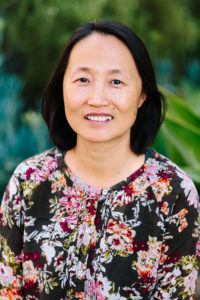
For engineering professor Qimin (CHEE-min) Yang, there are so many incredible moments throughout a teacher’s career, “and I never get tired of experiencing all of it,” says Yang. “Students start a course or project unfamiliar with concepts and undergo a transformation along the way. Seeing that progression and the ‘aha’ moment, when they’ve understood a concept they were previously struggling with, is rewarding to be a part of,” says Yang.
Yang’s interest in STEM developed early in her life: she preferred the logic math provided to that of humanities and social sciences. Yang received her bachelor’s degree in electrical engineering from Zhejiang University in Hangzhou, China, and her master’s degree in the same subject from Beijing University of Posts and Telecommunications. She went on to receive her PhD in electrical engineering from Princeton University.
Yang modeled her career path after her PhD advisor, a mentor and great influence in her life who encouraged her to pursue academia as a teacher. In the 1990s, fiber optic lines were a catalyst behind the rise of the internet and dot-com. “At the time, there was global growth in the field of fiber optics for long haul telecommunications systems, and new devices and systems were also being applied across broader industries” says Yang. And while she participated in optics research, architecture and systems prototyping during her studies, not long after she completed her PhD, Yang chose a career path of undergraduate teaching. “I have always loved interacting with students. As I age, I have grown to think of students as my children who I get to guide along a journey, and that brings a strong sense of mission.”
Yang joined Harvey Mudd in 2002 as a professor of engineering and, over her 21 years of service, has taught a variety of courses, including the advanced signals and systems, analog circuits, writing, engineering designs and fiber optics. As an interim Clinic director and associate Clinic director, she was instrumental in keeping the program running during the pandemic, supporting student work on dozens of simultaneous remote projects. Yang is also a member of the College’s Society of Women Engineers. “We have a lot of women engineers at Harvey Mudd, in a field that has historically been largely populated by men,” says Yang. “In my courses, I like to stay present as much as I can for my students who may feel intimidated by the field. I want them to feel comfortable seeing me in this role and know that they can solve circuit problems, design complex projects and do so much more.”
One of the highlights of her experiences was a student-led solar lights project for underdeveloped countries. Yang’s students developed prototypes for solar lights, considered costs, viability and sustainability, and involved younger kids and seniors in the local community as an educational collaboration, and shipped the lights to Haiti. “Seeing the students make connections between their learning and its real-world impact—those are such enjoyable moments,” says Yang. She also treasures conversations with former students, hearing where they are in their lives now personally and professionally.
And it’s not just the Harvey Mudd students who have been special to Yang. “I have had colleagues who have been great mentors, supporting and encouraging me throughout my career,” says Yang.
Outside of teaching, Yang has enjoyed watching her three children grow and thrive: this year, each completed a milestone graduation and moved on to new adventures. Her personal interests have also ventured into the arts and history: during the pandemic, Yang took up drawing and photography and continues to pursue her interests in reading when she has time.
Prof. Leah Mendelson: Fish Out of Water
Can biological propulsion be replicated?
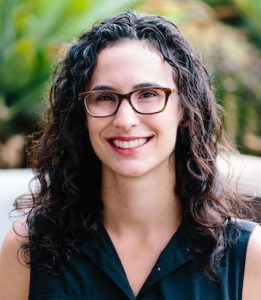
Leah Mendelson grew up in Owego, New York, down the road from where IBM was founded, surrounded by engineering companies like Lockheed Martin, whose outreach insured they were well-known at local schools. It’s no wonder she went on to study mechanical engineering. But the tie to her interest in fluid mechanics? Mendelson notes her many years as a competitive swimmer.
Today, as a fluid mechanics researcher and assistant professor in the Department of Engineering, Mendelson looks at methods for instrumentation and flow field measurement. But she also focuses on biological propulsion—studying fish and trying to model some of their behavior in mechanical systems, such as underwater vehicles. While a PhD student at MIT, she studied jumping fish, like archerfish, which are able to propel themselves a distance of a couple of times their size out of the water.
“What’s cool about this behavior is that they do it from right below the surface,” says Mendelson. “They don’t have a running start. All that power to propel themselves, all that acceleration has to be done in a limited space.”
Students in Mendelson’s lab work on reproducing the trends fish exhibit to have a better understanding of the physics behind the behavior and to see if it would be useful to replicate.
“With the rise of unmanned robotics, suddenly it doesn’t seem so crazy to have something that could function in both water and air,” Mendelson says. “But we need a strategy for getting between the two. So we’re looking to see if replicating fish behavior might be a viable way to do that.”
Mendelson’s own educational experience at Olin College, a small engineering and STEM school in Massachusetts, is what inspired her to come to Harvey Mudd, a similar institution on the West Coast, to teach.
“I felt a lot of the skills I had when I graduated—the things I knew how to do in a lab, the way I went about solving problems—I had those skills because I went through a small, student-centered curriculum,” Mendelson says. “I benefited from having those things in my own education, and I wanted to be able to provide that same experience to other engineering students.”
Mendelson joined Harvey Mudd in 2017 and now teaches Continuum Mechanics, an introductory solid and fluid mechanics course, and Introduction to Engineering Design (E4), a project-based class for first- and second-year students. Mendelson is also developing a course in mechanical design, which will launch in spring 2020 and will take the skills learned in her two previous classes and apply them to building mechanisms.
“The thing I love the most about teaching is when something finally comes together for students: some piece of a research project or assignment where they step back and see what they really accomplished,” says Mendelson. “Most of the time, students are so focused on achieving the end result that they don’t always realize how many skills they had to draw from and how many different tools they had to utilize. That moment when they do is always a fun experience.”
Prof. Steven Santana ’06: Improving the Human Condition
The Santana lab explores microfluidic devices and synthetic tissues
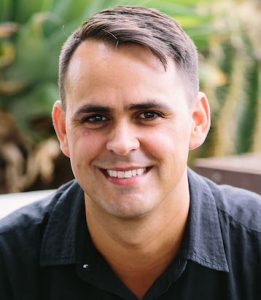
Students are designing microfluidic devices and synthetic tissues. Making a positive impact on a community is important to Steven Santana ’06, and he’s spent his educational career gathering the knowledge and skills to do just that.
The engineering and Spanish alumnus has a master’s in education (Loyola Marymount University) and a doctorate in mechanical engineering (Cornell University). He’s worked as a math teacher in Los Angeles and has designed a program for Denver Public Schools in Colorado to help all students get access to higher education opportunities and meaningful careers. As a doctoral researcher, he examined the use of microfluidics to isolate and study cancer biomarkers and designed microfluidic devices for this purpose.
Teachable Moment
When considering the faculty position at Harvey Mudd, Santana saw it as a great opportunity to impact yet more students while creating solutions to improve human health. Santana joined the faculty as a visiting professor in 2018 and became an assistant professor in 2019. During this time, he developed a microfluidics and nanofluidics course, which looks at fluid mechanics, chemistry and physics and how these fields connect to device design.
“My class pulls heavily from subjects students have already covered,” says Santana. “I can rely on the background content they learned in the Core, and students can jump right in and apply that knowledge to fluid mechanics and microfluidic device design.”
Santana also runs a microfluidics and biomaterials lab in which students design microfluidic devices and synthetic tissues. In graduate school, he used such devices to capture metastatic cancer cells, and now he’s working on engineering small biomaterials to program cell behavior. To explain the research’s importance, Santana uses the example of someone who has suffered a heart attack.
“Part of their heart tissue has died, but what if you could take stem cells directly from this person and do something to the stem cells so that they could be programmed to become muscle cells? Then you can put them into this same person whose heart tissue has died, and you have a way for them to regenerate tissues.”
Students in Santana’s lab work on the foundational science behind this question. He uses microfluidic devices to make very small tissues about the diameter of a human hair, loads them up with cells and varying chemical and mechanical signaling factors and measures the way the cells respond.
“I love that I can do research to answer interesting questions and advance topics of human health, while at the same time work directly with talented and curious students and watch them have those great ah-ha moments,” says Santana. “There are few schools that are high-caliber where you can do both of those things well, and that’s why Harvey Mudd is such a compelling place.”
Prof. Josh Brake: He’s Lighting the Way
Professor Brake uses biophotonics to study tissue
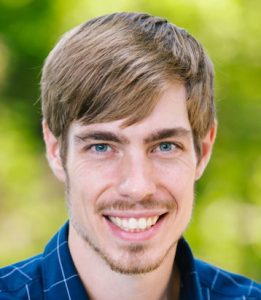
Ever wonder why your hand glows red when you shine a flashlight through it? Or how this is connected to the fact it’s tough to see through fog? The same physical phenomenon—optical scattering—is behind both. To learn more, we turn to Josh Brake, assistant professor of engineering, who is teaching students about biophotonics, the study of the science at the intersection of optics and biology that is increasingly playing a role in biomedical diagnostics and therapies.
At Caltech where he earned his PhD in electrical engineering, Brake worked on developing new tools to see deep into scattering media, like biological tissue, and on applying these tools to biomedical challenges in the life sciences and neuroscience. This work can help generate more accurate, more complete and less-expensive optical images of tissue samples. The investigation of ways to extract information from scattered light in tissue coupled with work on computational microscopy make up the focus of his new lab, which will be equipped with lasers, cameras, microscopes, computers and spatial light modulators to enable Mudd students to get involved in the development of next-generation optical microscopes.
With student researchers, he’ll work on developing methods to noninvasively focus light deep inside tissue, thus creating new tools and measurement schemes to make sensitive measurements of key biological markers, such as blood flow. Such measurements can help determine which parts of the brain are being activated, how fast blood is traveling or when certain neurovascular events occur, for example. By using scattered light to “tease out information deep inside tissue,” he explains, we have the potential to make functional MRI-like imaging cheaper and more accessible.
Brake will introduce students to methods such as wavefront shaping (a class of techniques used to reclaim scattered light), optical phase conjugation, and Fourier ptychographic microscopy, a microscopy technique which enables wide field-of-view, high-resolution imaging that was developed in his PhD lab at Caltech.
Brake’s enthusiasm for research and the potential of biophotonics to improve people’s lives extends to his teaching. For his first class, he taught Microprocessor-based Systems: Design and Applications (E155 or “MicroPs,” as it is affectionately called by students), an advanced technical elective where students apply their digital design skills using programmable logic and microcontrollers. The final assignment requires students to use a microcontroller and a field-programmable gate array along with a piece of new hardware they haven’t used before to build a device that is “fun or useful.”
“I love working one-on-one with students and am passionate about seeing each of my students thrive as individuals,” says Brake, who especially enjoys helping students build and debug hardware. “As someone who has gone through the struggle and experienced the joy of learning new and complex concepts many times myself, I want to help guide students as they pursue their own journeys of learning.”
Drew Price: Crafting Collaboration
Find out what—and who—is new in the HMC shop
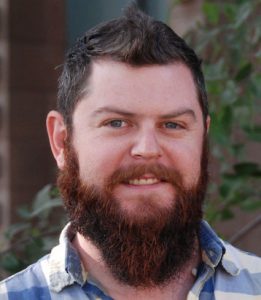
If you walk down to the basement in Galileo and navigate through the halls that echo with clacking and whirring, you’ll find the HMC machine shop, a center for creativity and learning on campus where students bring their ideas and designs to life.
In the middle of the shop floor, Drew Price, machine shop manager, moves expertly between a mill and his desk. After being hired by the Department of Engineering in fall 2019, Price pulled the desk out of a closet-like space to a spot where it is easily seen, allowing him to be available for whatever need may arise. He calls it “getting rid of the curtain.”
Price is enthusiastic about carrying on the tradition of the shop being a space that welcomes learning and creativity. He succeeds Paul Stovall, who retired after working in the shop for nine years, Mike Wheeler (16 years) and Ed Stubblefield (27 years). Like past managers, Price instructs students on design techniques, oversees projects in the machine shop and ensures that students and faculty members learn the correct techniques to safely use the equipment.
“It surprised me how the position at Mudd aligned with what I had been doing and what I enjoy doing,” says Price, who grew up with a knack for cars and making things and a desire to design race cars. Taking on the job at HMC seemed like the next logical step.
While a student at Northwestern University, he founded and served as head engineer and frame and suspension captain of the Formula SAE Northwestern Racing team. Through his involvement with the team, Price was introduced to the student machine shop and learned to use computer numerical control (CNC) machining and other equipment that is similar to that available in the shop at Mudd. He also was a student shop trainer, a position mirroring the HMC shop proctor.
“That background was the basis for everything else I have learned in my career,” Price says. “I am passionate about that mix between the academic and the practical applications.”
After graduating from Northwestern (B.S., mechanical engineering), Price managed a car repair shop to maintain the machining techniques he had learned. He then worked for the Pilot Group, a company that did contract design work building custom equipment. This exposed him to new methods of manufacturing and machinery, and he was able to work on a variety of projects, from aerospace hardware to farm equipment.
“I think it’s really important to have a good fundamental background that will enable lifelong learning,” Price says. “I’m lucky to do as a career what I did then. I’ve just shifted to an instructional setting.”
Price says there is no “typical” day in the machine shop. A range of student projects and faculty requests keep his days interesting. Last semester, he worked with Ziyad Durón ’81, Jude and Eileen Laspa Professor of Engineering, to build new components for the load cells Durón uses in the safety analysis for hydroelectric dams. Price also helped Steven Santana ’06, assistant professor of engineering, build assembly tooling for his research lab.
“The best part of my day is the people I work with,” Price says, adding that HMC students’ keen interest in learning is an added bonus.
One of Price’s goals is to make the shop feel open and welcoming. In addition to placing himself in the center of the action, he’s added a table and a whiteboard where users can talk through ideas before putting them into action. He’s looking into additional services the shop could offer as well as resources for shop users who may want to work on open-ended projects, such as those for a Clinic project or art course. “This will mean that our amazing shop proctors and users will be able to think of the available tools more creatively to make their designs really come to life,” Price says.
He looks forward to helping students and faculty achieve their goals and creating an environment that encourages collaboration, something that will be a prominent feature of the new makerspace in the Scott A. McGregor Computer Science Center, slated for completion in early 2021. The machine shop will be repositioned so that it is adjacent to the makerspace, a multidisciplinary hub. Price is excited for this new configuration because the floor plan will allow students and faculty to pass easily between the two spaces for prototyping and manufacturing.
In the meantime, Price is focused on the spring 2020 semester and working with students in Introduction to Engineering Design and Manufacturing (E4) as they learn machine fundamentals and start designing class projects. He also plans to hold training sessions with shop proctors to teach them advanced techniques in wood working, welding, workholding devices and setup, SolidWorks and CNC machining.
“I value the students’ openness and enthusiasm,” Price says as he surveys the activity around the machine shop. “Everyone is here to learn.”
Prof. Albert Dato: Better Than Diamonds
Failed experiments provide a lesson in perseverance
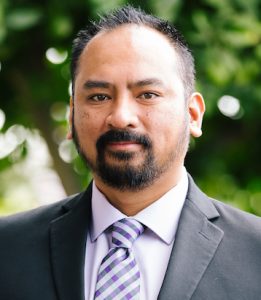
When Albert Dato devised a method of turning alcohol into graphene, he was thoroughly disappointed. The black powder his experiments rendered was not at all what he was hoping for.
“Originally, I was throwing vodka into a machine because I was trying to grow diamonds,” says Dato, Iris and Howard Critchell Assistant Professor ofEngineering. “When my experiments failed, I was turning vodka into graphite.”
The machine he used for this experiment, a microwave plasma reactor, uses ionized gas to break apart the ethanol in vodka, a process he originally hoped would produce a diamond, one of the two stable forms of carbon. Instead he produced single layers of graphite, the other stable form of carbon, aka pencil lead, aka not as exciting as diamonds. But it turns out that graphene, which is a single layer of graphite, is perhaps an even better result than diamonds, for reasons that are scientific, environmental and economic.
Graphene is the strongest material ever measured. It also conducts heat and electricity well. It’s a material that could potentially be used in any number of applications. And, up to the point of Dato’s discovery, graphene was incredibly difficult to produce as it had to first be mined as graphite, then separated from impurities, then broken down into a single layer.
“At the time of my first experiments, I was disappointed because it’s really tough to grow diamonds when you’re forming graphitic materials. But once I realized what I had, I put the diamond research aside,” Dato says. “I realized we can make graphene easier than with breaking down graphite, and that, because of its properties, we could make something useful with it to address problems in the world.”
Mining Confidence
Having made his own big discovery after many failed experiments, Dato encourages his students to persevere. “The way I run my lab is to give students a goal and then let them figure it out,” he says. “That’s how I learned, and it helped me grow as a scientist. I love to teach, and I love the process of scientific discovery. It’s even better when your student experiences it.”
Students in Dato’s energy and nanomaterials lab at Harvey Mudd College agree. Chance Bisquera ’19 says he was having a tough time academically when the opportunity to participate in a materials engineering research project in Dato’s lab became available. “That was a turning point for me as a struggling Mudder,” he says. “I was looking for an extracurricular activity that I enjoyed and that allowed me to apply what I learned in the classroom to a project that can have an impact on society. My time spent thus far in lab has provided me with a renewed sense of confidence, helped me improve as a critical thinker and scientific explorer and has taught me some of the basic research skills that I will need should I choose to attend graduate school in the near future.”
“I wouldn’t trade one HMC student for three grad students,” Dato says. “They’re really passionate about what they do. Students in the Dato Lab are excited about taking ownership of their projects.”
Graphene Is a Guy’s Best Friend
“I remind myself of ‘Bubba’ from the movie Forrest Gump when I talk about the potential applications for graphene,” Dato says, referring to the character Benjamin Buford “Bubba” Blue, who spent his time thinking and talking about all the ways one can cook shrimp. “Car parts, airplane parts …” Dato says, laughing.
Indeed, there are a lot of ways graphene could be used in practical applications. However, using his current technique, Dato is only able to produce tens of milligrams of graphene per hour.
“The barrier to all the applications is being able to produce a lot of high quality graphene,” Dato says. “It’s still cheaper to mine graphite for use in pencils. But the mined graphite is full of other things. The lab stuff we make in our lab is pure carbon. So that’s the prime advantage; it’s much higher-quality graphene. The goal is to improve the production to make kilograms versus milligrams.”
After students modeled what happens inside the microwave plasma reactor, where ionized gas breaks apart ethanol to produce graphene, the next step was to build a new plasma box that’s cheaper and smaller than existing models, but they had to figure out how. Results came after a lot of trial and error.
“So many designs, so much frustration and failure,” Dato says, adding that as it’s all part of the process. “I failed so many times. Me figuring out how to make graphene out of ethanol was a failure because I failed to grow diamonds. You fail, you learn, you move on.” After several semesters of work by several students, a late-night text from one of them delivered good news. “Harry Fetsch ’20 sent me a video of the ignited plasma in a chamber,” Dato says. “He figured it out!”
Multifaceted Potential
In thinking about the many uses for graphene, Dato has focused on one area of research on its potential as part of composite materials that are stronger but more lightweight than existing products—think car or aircraft panels that can withstand more impact to improve safety and also weigh less, to improve fuel economy.
To develop a composite, Dato and students are experimenting with mixing graphene and epoxy. “We think it will outperform any other composite that’s been published so far,” Dato says.
When Nicole Subler ’16 was at Harvey Mudd (she’s now an engineer at Bolt Threads), she spent 10 weeks in the lab developing an epoxy/graphene composite specimen and then creating molds to reproduce it. Jacob Knego ’18 took the project from there, working to perfect the process of making the specimens. The results of their tests have indeed shown that graphene improves the strength, stiffness and ductility of the epoxy.
This year, Kevin Nakahara ’20 and Nathan Sunbury ’21 continue the next phase of the research, which is to determine why the graphene has the effect it does on the epoxy structure.
“The most interesting part of the research isseeing how such a simple step in adding nanofillers can have such a profound effect on the performance of the specimens,” Nakahara says. “Not only can you see the enhancement in the data but you get a sense of this during the testing process, which in itself is exciting due to the suspense created when we are breaking the specimens.”
Students in the Dato Lab are also investigating how graphene might be used as a medium for 3-D printing. “In particular, we are trying to determine if the inclusion of a certain carbon nanoparticle improves any of the material properties (ultimate tensile strength, ductility, elastic modulus, strain at break, toughness) of specimens printed from standard 3-D printing resin,” says Bisquera, who is beginning his second semester on the project.
Bisquera says working in the Dato Lab is challenging, academically fulfilling and fun. He’s also inspired to think about his future as an engineer. “I can see my research potentially having an impact on society,” he says. “As an engineer who greatly enjoys prototyping, design and building, I have always been fascinated by 3-D printers for their ability to transform a digital design into a physical reality. Ultimately, I can see the work done in this project as having an impact on the quality and durability of 3-D printed designs.”
For Dato, working at Harvey Mudd is fundamentally about his love of teaching, his passion for graphene research and his desire to, along with his students, tackle engineering’s grand challenges. By combining all three ideas, he hopes to form a collaboration between his students and an industry partner to learn if they can make current graphene composite applications better. “If we make cars and aircraft lighter, you have better fuel efficiency, less emission—the goal in the Dato Lab is always to make something to help the environment,” he says.
And the diamonds? “Diamonds can wait,” Dato says. “Let’s focus on this material that can make the world a better place.”
Prof. Nancy Lape: Innovative Engineering Educator
Distinguished teacher welcomed as visiting professor at Princeton
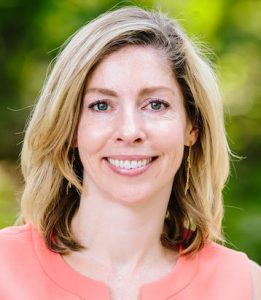
Nancy Lape, associate professor of engineering at Harvey Mudd College, has been awarded the William R. Kenan, Jr. Visiting Professorship for Distinguished Teaching at Princeton University. The award is given to individuals “who have set standards for exceptional scholarship and distinguished teaching.”
Selected for demonstrated excellence in teaching and for her capacity to bring new ideas in undergraduate teaching to the campus, Lape will spend her 2018–2019 sabbatical year at Princeton. She’ll teach an undergraduate course and engage in other activities aimed at improving teaching at Princeton, such as workshops for faculty and graduate students, demonstration lectures and classroom visits.
“The William R. Kenan, Jr. Visiting Professorship for Distinguished Teaching is an exciting opportunity to teach and learn from other professors in another rich research environment,” says Lape, who adds that she’s also looking forward to exploring Princeton’s teaching and learning centers and hearing more about the university’s work on its sequence of integrated science, mathematics and engineering freshman courses and how this might inform potential revisions to Harvey Mudd’s Core Curriculum.
Lape joined the Department of Engineering at Harvey Mudd College in 2005 and serves as the director of the Patton and Claire Lewis Fellowship in Engineering Professional Practice. Her research focuses on energy-efficient composite gas separation membranes and chemical transport across human skin. She received a B.S. in chemical engineering from the University of Massachusetts at Amherst, and a PhD in chemical engineering from the University of Minnesota. In 2009, she received a prestigious National Science Foundation CAREER Award.
Lape is interested in finding innovative approaches to engineering education. With fellow Harvey Mudd faculty Rachel Levy and Darryl Yong, she conducted a four-year controlled study of flipped classroom instruction at Harvey Mudd. Their work, which provides evidence-based recommendations to STEM educators, was publicized widely, including in the Los Angeles Times and in Slate.
Lape also co-authored an award-winning paper that describes the redesign of the College’s Engineering Systems course from the lecture model to a model that includes active learning (flipped classroom) tutorials and hands-on practicums. The paper “Integrating Theory and Hands-On Practice Using Underwater Robotics in a Multidisciplinary Introductory Engineering Course,” won second place in the First-Year Programs Division and first place for presentation in the same division at the 2017 ASEE Annual Conference and Exposition. Lape and Department of Engineering colleagues Lori Bassman, Christopher Clark, Albert Dato, Angela Lee, Matthew Spencer and Erik Spjut, and Director of Institutional Research and Effectiveness Laura Palucki Blake, collaborated on the paper, which includes results that show major increases in student learning and increased positive attitudes toward engineering.
Lape is a member of HMC’s Faculty Executive Committee (FEC), the FEC subcommittee on diversity, inclusion and equity, and the Core Review Planning Team, which helped lead an external review of the College’s Core Curriculum.
The William R. Kenan, Jr. Visiting Professorship for Distinguished Teaching was established as part of the Princeton’s 250th anniversary celebration in 1996. Lape’s colleague, Chris Clark, professor of engineering and associate department chair, held the William R. Kenan, Jr. Visiting Professorship for Distinguished Teaching before joining Harvey Mudd College in 2012.
Prof. Philip Cha: Exciting Vibrations, Inspiring Students
An expert in mechanical vibration, Professor Cha shares research and collaborates with students
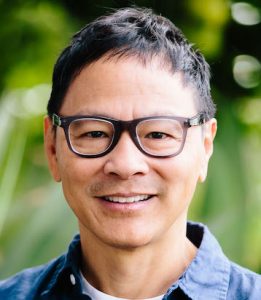
Before he became an engineering professor at Harvey Mudd, Philip Cha worked as a Senior Research Engineer at the Ford Motor Company Research Laboratory’s chassis systems department, where, among other things, he constructed mathematical models to simulate the behavior of anti-lock brakes. “I liked what I did, but this is so much more fun and gratifying,” Cha says of teaching. “When a student gets excited about a subject, it’s really fulfilling.”
At Mudd, Cha studies mechanical vibration. One of his research interests lies in seeking ways to minimize and suppress vibration on a structure to improve its lifespan and safety. His work with students, however, is all about expanding knowledge and developing novel ways to analyze vibration.
Cha, C.F. Bran & Company Fellow, is currently collaborating with a graduate student and his advisor at Shanghai Jiao Tong University in China, studying vibration suppression. “The advisor was a student of mine when I taught at Tsinghua University in Beijing during my sabbatical from 2004 to 2005,” Cha says. “It’s so exciting to have a student become a professor with students of his own. I love to think back about what he was like as a student and to see him now as a teacher.” They’ve had some exciting results in their research collaboration, which Cha happily demonstrates through a computer animation of vibration of a harmonically excited plate. By enforcing nodes at various locations, they are able to mitigate vibration in specific regions of the plate. They published a paper on their research last year and have just submitted another one for review based on an extension of their previous work.
In his lectures at Harvey Mudd for his upper-level technical electives, Cha likes to share many of his research findings with his students. “I expose them to as much of my research as I can. I want them to be excited about mechanical vibration and structural dynamics,” he says. When something sparks a student’s interest, Cha asks if they want to collaborate on research in that area.
One such collaboration has been studying eigenvalue perturbation theory with Austin Shin ’18. “Many engineering problems involve a system of differential equations, which depend on many parameters in the system, such as different masses, spring stiffnesses and damping coefficients,” says Shin. “Solving an eigenvalue problem associated with the system reveals interesting characteristics about the dynamics of the system, but it can take a significant amount of time and computing power to do so, and if any of the parameters are changed, the entire problem must be solved again.” Cha and Shin are developing an efficient method that can quickly approximate the new system’s eigenvalues and eigenvectors.
“We use the eigenvalue perturbation method, which provides us with closed-form expressions containing simple matrix multiplication, and matrix multiplication can be done exceptionally quickly with software,” Shin says. “Working with Prof. Cha is great practice in doing research and being a part of academia. He has high expectations for the results and the work that you present and write. He’s very understanding and knows that as students, we can be very busy at times. And he’s great at communicating, easy to contact and believes in your ability to perform and deliver, which I find most helpful.”
Prof. David Money Harris: Aerial Altruism
This pilot and professor donates flights to help conservationists
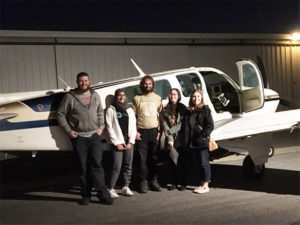
When engineering professor David Money Harris’s family wants hamburgers for dinner, they like to go to one of two favorite California locations, the Beachside Cafe in Santa Barbara or Landings in Carlsbad. Both locations are quite a long drive away from Claremont, which is why they fly.
In the 20 years that Harris has held his pilot’s license, he’s flown for many reasons, in addition to a quest for good burgers—business travel, family vacations, bypassing Los Angeles traffic. Harris has also flown for another reason: volunteer work.
Fifteen years ago, Harris flew for AngelFlight, doing nonemergency medical transportation for people in need. “I took some kids and adults who lived in remote areas for cancer treatments in L.A.,” Harris says. “I also got to ferry an injured Iraq War vet to visit his family.” Recently Harris has resumed his practice of donating flights for a good cause, this time via LightHawk, a non-profit organization that supplies pilots, planes and flight time for conservation projects that benefit from the perspective of aerial views.
After seeing LightHawk’s advertisement in aviation magazines for many years, Harris met a representative from the organization at an event last year and signed up. Donating his time and the expenses of flying his plane, an A36 Bonanza, Harris flies passengers involved with various conservation organizations on missions related to their projects.
“LightHawk keeps a mission board, and I sign up for flights based on my availability, location and the suitability of my aircraft for the task,” Harris says.
His first mission, in June, was to assist the Heal the Bay organization by taking the California Fish and Game Commissioner to see how marine-protected areas off the coast of Palos Verdes and Catalina have contributed to the revitalization of the ecosystems there.
In October, Harris flew members of the Bay Foundation from Santa Monica Bay to Point Conception to examine marine-protected areas that do and do not allow fishing. Though similar to his previous flight, this one required extra precaution. “The trip was far enough off-shore that we had to wear life jackets,” Harris says.
Most recently, in December, Harris flew with the Surfrider Foundation to observe the impact of a king tide event, a regular occurrence that can help provide an idea of what a permanent rise in sea level might look like. “I carried a foundation official, a Carlsbad city councilwoman (who was a former pro surfer) and two KPBS reporters,” Harris says. “The 6.9-foot tides were up against the sea cliffs along most of the route between San Onofre and the Mexican border, with just a bit of the largest sand beaches showing.”
Not only does working with LightHawk allow Harris to fly for a good cause, it also has potential for being exciting and unusual.“I almost carried an endangered wolf across the country to a breeding program last year,” Harris says, “but the wolf is very sensitive and wouldn’t have done well if I got delayed by bad weather, so my plane wasn’t the right one for the task.”
Having flown marine-related flights so far, Harris, an avid hiker, looks forward to the chance to be involved with land conservation efforts as well. “I write hiking guidebooks,” he says, “so I have a strong personal interest in the health of our mountains and deserts.” Given his close proximity to several mountain ranges and deserts in Southern California, there’s a good possibility Harris will get that chance. In the meantime, he can always take the family out for burgers.
Curricular Innovation and Our General Engineering Program
How do we ensure HMC students become standout professionals? Here are some insights from the 2017 Engineering Faculty Retreat
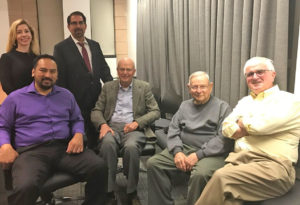
How does a College improve upon an engineering program that is routinely ranked No. 1 or 2 in the nation? By employing one of the field’s time-honored methods: continuous improvement.
During a Department of Engineering faculty retreat in January 2017, emeriti professors and current faculty members participated in a discussion about the development of HMC’s engineering program and where it stands now.
In devising the program, engineering department Chair Liz Orwin ’95 sought to gather diverse perspectives on HMC’s engineering program in order to inform discussions about the curriculum as the department evolves to meet student and industry needs.
Providing insight were engineering faculty leaders from the earliest years to the present.
- Mack Gilkeson, Professor of Engineering Emeritus (1961–1986); co-inventor and co-founder of the Clinic Program
- Richard Phillips, Professor of Engineering Emeritus (1966–2002); former department chair and Engineering Clinic director (17 years)
- John Molinder, Professor Emeritus of Engineering (1970-2015) and former department chair
- Jim Monson, Professor Emeritus of Engineering and former department chair
- Tony Bright, John Leland Atwood Professor of Engineering Science, former department chair and former Engineering Clinic director
- Ziyad Durón ’81, Jude and Eileen Laspa Professor of Engineering and former department chair
- Nancy Lape, associate professor of engineering, former associate department chair
- Chris Clark, professor of engineering and associate department chair
- Gordon Krauss, Fletcher Jones Professor of Engineering Design
- Albert Dato, assistantprofessor of engineering
The panel considered several questions, including: What has the general engineering curriculum meant for our identity as a program? What are the biggest changes you’ve seen? Is there something you wish we’d done, or something you would have changed in retrospect? How should the liberal arts context and the changes to the Colleges Core Curriculum inform our thought process?
“We’re talking a lot about our curriculum,” says Orwin. “What do we want to change, innovate? We want to make sure we don’t lose what makes us special. I thought this panel would be a way to get many perspectives to help us think about our curriculum over time and moving forward.”
Discussions revealed that some things are relatively conserved. The idea of general engineering and educating generalists is one thing everyone agrees on. That’s the department’s niche: generalists who are able to see the big picture and are able to make necessary connections to solve complex problems.
Molinder commented, and all agreed, that the biggest change that has impacted the program is the dramatic increase in computing power and the development of computer science, something that affects all engineering fields.
Monson said, “Our general engineering/design/systems way of thinking has contributed strongly to the perception that the Harvey Mudd engineer can take on anything and do it well.”
Participants also shared ideas about how to have a more intentional connection between technical work and humanities, social sciences and the arts/liberal context of education/impact on society.
The desire for the department’s connection to industry remains. The Clinic Program, an innovation of the engineering department in 1963, is strong and is an important way for engineering faculty to maintain ties with industry.
In a recent survey of engineering alumni and students, two areas of improvement that were identified were software proficiency and professional skills. Discussions are underway about where to add software courses into the curriculum.
“That’s part of the reason for this panel,” says Orwin. “We are asking questions like, has software engineering risen to the level of an engineering science, or is it something that should be included throughout all of our courses. And what do we give up if we add it?”
Regarding professional skills, panelists discussed how the department could be more intentional about helping students improve in this area. The recent addition of leadership development expert and entrepreneur Werner Zorman, the first to hold the Walter and Leonore Annenberg Chair in Leadership, is one step toward helping students become standout professionals.
“We’re continually informed by what’s going on in the outside world,” says Orwin. “We want to graduate students who can hit the ground running, whether they go to grad school or into industry.”
Prof. Matthew Spencer: The Aggressive Dabbler
Here’s Professor Spencer’s strategy for making Harvey Mudd a powerhouse school for analog engineering
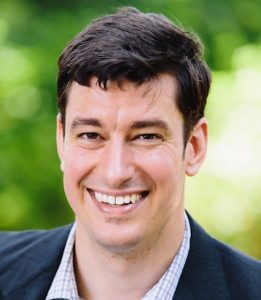
As a UC Berkeley graduate student working on his dissertation, Matt Spencer sought a way to explain how to design circuits using micro-electric mechanical systems. So, of course, he created an interpretive dance video using cowboys and kung-fu.
He entered it in the Gonzolabs’ “Dance Your PhD” competition.
“With my martial arts background and various choreographers I knew, I thought for sure I would sweep it,” Spencer says. “But by the time I got around to entering, the quality of competition had improved tremendously, and I got fairly stomped.”
Martial arts are just one of many extracurricular passions for Spencer, an HMC engineering professor and self-described “aggressive dabbler.” Others include swing dancing, choir singing and most recently tai chi, which is easier on the body than wushu (another hobby), which involves wielding a six-pound wooden bench, among other items.
Spencer was introduced to wushu—“not to be confused with moo shu, which is pork”—while earning his PhD in electrical engineering from UC Berkeley, which claims the oldest collegiate wushu club in the nation, dating back to 1987.
A Harvey Mudd visit becomes permanent
Initially, Spencer had planned to work in an industrial research lab and then make a bid for an R1 research university. Then, HMC engineering Professor David Harris recruited him at a conference and sold him on visiting Harvey Mudd for a year. Spencer enjoyed teaching and thought it would be a nice break before “hopping into the industrial millstone for the next 30 years.”
“It was a really good year,” Spencer says. “The students exceeded my expectations, my coworkers were great, I liked all the professors, and the job was fun.”
A tenure-track position opened up the following year, and he applied.
Coming to Harvey Mudd allowed Spencer to broaden his research interests to include radio-frequency design, phase change memory, automated analog design and PCB ground plane optimization.
His radio-frequency lab is up and running thanks to the efforts of several students who were involved every step of the way from specifying parts, ordering equipment and winning government auction bids. The team also built software that allows the lab instruments to be controlled by student laptops, which allows more complex automation of the facility.
“The lab would not be in the shape it’s in today without the help of four students who worked on it with really great success, and I’m really grateful to them,” Spencer says. “It’s getting traction, and I’m excited about that.”
He’s planning on offering a radio-frequency design course in the spring largely built around the radio-frequency lab. That course is one of several advanced electives he hopes to bring online, including an advanced analog course where students can explore how to make a chip that takes complicated mixed signal measurements.
“There’s a lot of room for Harvey Mudd’s analog curriculum to grow, and I’m super excited about making Mudd a powerhouse school for analog engineering,” Spencer says.
Emerging technology devices require a ground-up rethink
One of Spencer’s research projects is exploring the design of ground planes on circuit boards, a venerable problem. Ground planes ensure that every device on the circuit board has the same reference voltage, and their design can be tricky if sensitive analog circuits and noisy digital circuits are packed close to one another.
“There are various ways to design these things but, remarkably, no one has published a credible paper on what actually works and what doesn’t,” Spencer says. “We are doing that.”
He’s particularly interested in the prospects presented by emerging technologies, an area of research that is gaining traction.
“Emerging technology devices have radically different physics than we are used to, and they work differently than devices that are currently on the market,” Spencer says. “As a result, the circuit design you have to use in order to incorporate them into computers requires a ground-up rethink of how you would normally build memory. And being able to do that ground-up rethink is pretty rewarding. There’s a lot of room for creativity.”
Several of Spencer’s students are working with him on software called the Berkeley Analog Generator to automate analog design, something that has challenged researchers since the 1980s. The software could impact industry by allowing people to codify existing, complex, analog designs in a way that can be repeated.
“As that gets off the ground, we’ll start building some interesting chips and see where that takes us,” Spencer says. “It’s going slowly, but we’ll get there.”
Beyond his research, Spencer is part of a faculty committee working to revise the curriculum for E79, the introductory engineering class that all Harvey Mudd students take as part of the College’s interdisciplinary focus, and E80, the follow-up course for engineering majors.
After a decade of having students build rockets for their final project, students in E80 now construct sophisticated underwater robots and deploy them in the ocean off of Catalina Island. Students in E79 have the opportunity to build simpler underwater robots that can be tested in the Bernard Field Station lake across the street from the College.
“These are students who have never done any engineering before,” Spencer says. “They will have to assemble a robot and build a payload capable of measuring temperature and pressure so they can plumb the depths of the lake and figure out its temperature profile.”
Prof. Gordon Krauss: The Cutting Edge
Engineering professor challenges students to question traditional assumptions
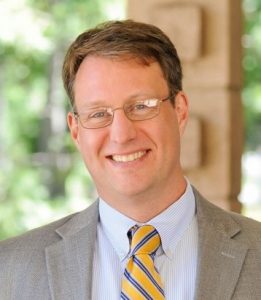
The next time you slide a razor over your skin, think of Gordon Krauss.
It was Krauss, working for Schick, who invented a shaver lubrication strip that transformed the industry. Today, the Fletcher Jones Professor of Engineering Design is using his design and development knowledge to instruct Harvey Mudd College engineering students. It all began in his father’s New Jersey machine shop, where Krauss learned the fundamentals of problem solving as he snipped solder and performed other tasks.
“My dad taught me to use a mill, a lathe and more,” Krauss says. He says his dad showed him how to troubleshoot existing problems to find the root cause and to imagine soutions beyond those readily available. “Beyond that, he showed me how to cooperatively find solutions that worked for all those involved and to have a broader vision than optimizing mere narrow self-interest.” The die was cast.
Challenging assumptions
Raised in Haddonfield, N.J., Krauss earned a PhD in mechanical engineering at Boston University. He soon joined the Ford Motor Co. Research Lab as a technical consultant analyzing the abrasiveness of diamond coatings. Later, he was hired by Schick, where he honed the skill of challenging traditional assumptions—a skill he now dispatches to his students.
“By carefully deconstructing the system and understanding how every aspect worked and contributed to the overall shave, I was able to invent the lubricating strip that went onto the Schick Hydro product,” Krauss says, adding that since the strip lasted longer people experienced an improved shaving experience. “We started by challenging many of our assumptions.”
Along the way Krauss developed a strong interest in teaching future engineers, and in 2013 he joined Harvey Mudd College, where his current research interests include friction, wear and lubrication in mechanical and biological systems, as well as design education. For the latter, Krauss examines how students provide feedback to each other on their design projects. Aspects of that involve written versus oral feedback, anonymous versus face-to-face feedback, and the differences in effectiveness of the feedback methods for men and women.
Feedback lessons
“As a student and later a professional, it occurred to me that designers—both students and professionals—are reticent to provide candid feedback on the performance of their design colleagues,” he says. “One of the things we’re looking at is how you teach people to give critical feedback with an appropriate professional tone.”
To Krauss, Harvey Mudd College is the perfect training ground for such instruction.
“Harvey Mudd has very smart students who are well engaged and really want to learn,” says Krauss, whose fall teaching schedule includes two courses: Introduction to Engineering Design, Manufacturing and Management (E4), and New Product Development (E181). “Our students are involved in their work, very dedicated and are really invested in helping each other. Those are qualities I appreciate.”
The multi-faceted engineer
They also are qualities that enable Krauss to press forward with the overriding goal he has for his students: to become outstanding, multidisciplinary engineers.
“I want them to be optimally positioned and well-informed to make excellent career and life choices,” he says. “Mudd has an amazing advantage in that we don’t have a disciplinary engineering program—students don’t throw up a wall and say, ‘I’m a mechanical engineer—I can’t do chemical engineering.’ Our students are trained in all the engineering disciplines, and often that gives them a leg up.”